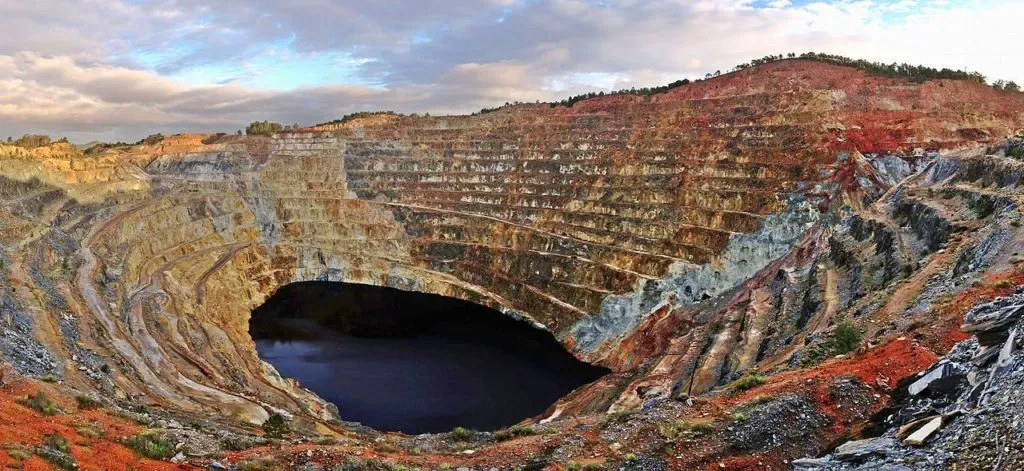The Rio Tinto is a coastal river in southern Spain, which runs through the province of Huelva, in Andalusia. It is born in the Sierra de Padre Caro and after traveling almost 100 km it reaches the Huelva estuary, where it merges with the Odiel river. It is a very particular river.
The Rio Tinto River is known for the reddish color of its waters and recently caught the attention of NASA. For many years it was thought that these characteristics of the river were due to contamination from mining. A group of scientists investigated in the area and concluded that, although the mine had an impressive activity, its composition is fundamentally natural.
 |
| Rio Tinto River Spain |
The origin of the red waters of the Rio Tinto River
Scientists have been able to show that before man exploited this rich mining area from which abundant copper, gold, silver and iron have been extracted, the mining basin had very particular characteristics. There are microorganisms called chemolithotrophs, literally 'stone eaters', that do not need organic matter. That is, they can grow oxidizing minerals that are inorganic matter.
Chemolithotrophic organisms are capable of using reduced inorganic compounds as substrates to obtain energy and use it in respiratory metabolism. It is a faculty known by the name of chemosynthesis.
 |
| Rio Tinto River Spain |
The extreme environment of the Rio Tinto
The Rio Tinto is an extreme environment with a very low pH level. It also highlights the presence of high concentrations of metals in solution. The extreme conditions of the Tinto River are maintained due to the symbiotic coexistence of the biological components that live in its ecosystem.
Chemolithotrophic organisms are the most abundant producers in the system. It also highlights the presence of algae, which are the other primary producers. On the other hand, there are the biological components that consume what the producers generate. In this case, it is a series of fungi and bacteria that are responsible for consuming and decomposing.
The minerals of the Rio Tinto River are stable when they are not in contact with oxygen or water. However, when exposed to these factors, metal sulfides are easily oxidized. Especially thanks to the catalytic effect of chemolyttrophic and acidophilic microorganisms.
 |
| Rio Tinto River Spain |
A unique place in the world
There are two factors that make the Rio Tinto River unique in the world: its geological characteristics and the richness of its minerals. It is an area where pyrite, chalcopyrite and other complex sulfur minerals abound. Due to the peculiar composition of its waters, the Rio Tinto River does not host fish. But it does offer the necessary resources for certain microorganisms to live in and thanks to them.
The waters of the river have a very complex chemistry. Its red waters are characterized by their very acidic pH, with a high content of heavy metals: iron (the most abundant), copper, cadmium, manganese, etc. And despite the fact that it is an extreme environment, representatives of all the branches of the tree of life live in them. Bacteria and more than a thousand fungi have been found, but there are no fish. The animals that live in the Rio Tinto are unicellular or multicellular.
A few centimeters deep there is no oxygen and the bacteria that develop have the ability to breathe iron. Therefore, the color changes in that area and is bluish or transparent.
